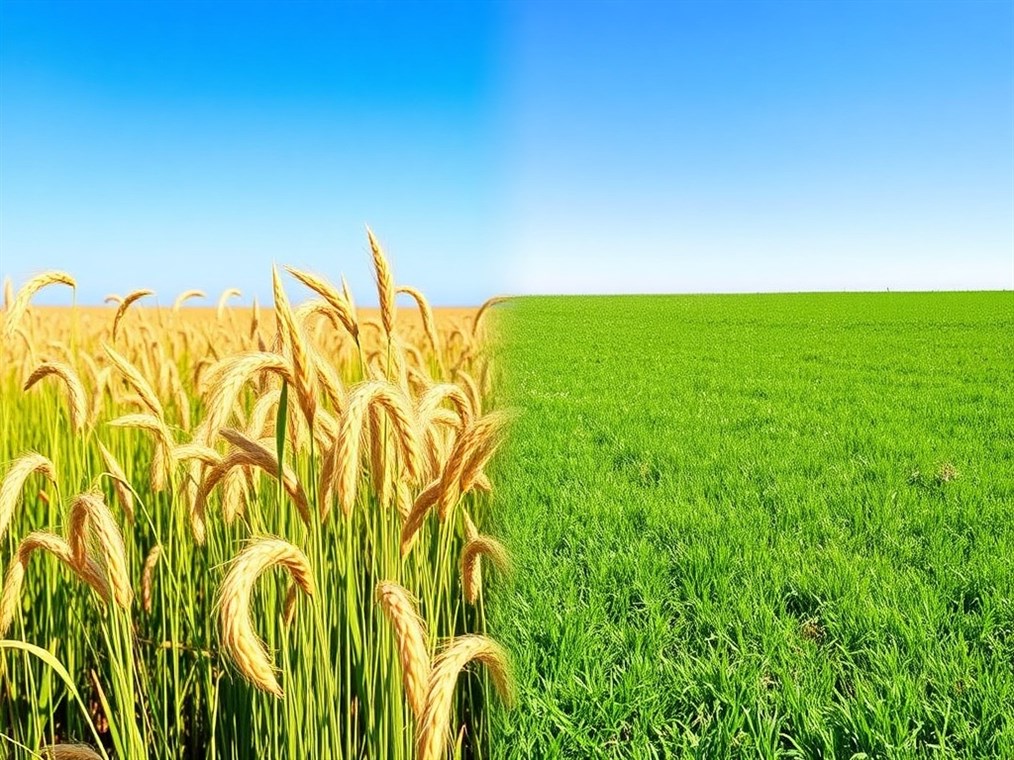Rye vs. Ryegrass: Sorting Out These Two Totally Different Plants
Ever get rye and ryegrass mixed up? You’re not alone! They sound similar, but trust me, these are two completely different plants with totally different jobs. One’s a grain, the other’s a grass, and knowing the difference is key, whether you’re a farmer, a homeowner trying to get that perfect lawn, or just curious about the world around you.
Rye: The Tough-as-Nails Grain
Rye (Secale cereale), that’s your hearty grain. Think of it as the scrappy underdog of the grain world. It’s related to wheat and barley, but it’s way tougher. Got poor soil? Harsh climate? Rye just shrugs and keeps on growing. Back in the day, it was a major food source in Northern and Eastern Europe, and it’s still a big deal there. It can pretty much grow anywhere.
What Makes Rye Special:
- What it’s good for: Rye is the star ingredient in rye bread (obviously!), and it’s also used to make rye whiskey, which is delicious. Farmers use it for animal feed. And don’t forget the straw! It’s used for everything from bedding for animals to roofing and even cool crafts. It’s also catching on as a cover crop, which is pretty cool.
- How it grows: This isn’t your average short grass. Rye can tower over you, reaching anywhere from 3.5 to a whopping 10 feet tall! It’s got these blue-green leaves and a spike where the seeds grow.
- The Variety Show: You’ve got winter rye and spring rye. Winter rye is the popular one. Farmers plant it in the fall to protect the soil over the winter, and then harvest it the next summer. Talk about efficient!
- Good for you: Rye’s not just tasty; it’s good for you too! It’s packed with carbs, fiber, and protein. Plus, it’s got vitamins and minerals like selenium, thiamine, manganese, and iron. And get this: it’s got a lower glycemic index than wheat, so it doesn’t spike your blood sugar as much. That high fiber content is great for you as well.
- Where it thrives: This plant is not picky. It can handle soil with a pH from 4.5 to 8.0, but it prefers well-drained loam or clay-loam soils. It’s also drought-tolerant and can handle subzero environments.
- Gluten Alert: Yes, rye has gluten, but it’s not the same as wheat gluten. It’s less elastic, which is why rye bread is denser.
Ryegrass: The Lawn and Pasture MVP
Ryegrass (Lolium spp.) is what you think of when you think of grass. You’ll find it in lawns, sports fields, and pastures. It’s all about the green leafy stuff, not the grain.
Ryegrass in a Nutshell:
- Its Many Uses: Ryegrass is the go-to for lawns and sports fields because it creates a thick, tough surface. It’s also fantastic for feeding livestock. And here’s a neat trick: in warmer areas, people use it to “overseed” their lawns in the winter, keeping them green all year round.
- Meet the Family: The main types are perennial ryegrass (Lolium perenne) and annual ryegrass (Lolium multiflorum). Perennial ryegrass is a long-term player, creating a dense, beautiful lawn. Annual ryegrass grows fast, but it doesn’t stick around as long.
- How it Grows: Ryegrass is a bit shorter than rye, usually topping out at 1 to 3.3 feet. It’s got tough, dark green leaves and grows in clumps.
- Nutritional Value: Ryegrass is like a protein shake for animals! It’s packed with energy and protein, usually around 18-20% crude protein.
- Where it Thrives: Ryegrass likes dark, rich soils and mild climates. It prefers cool, moist conditions and doesn’t do well in super hot, dry weather or really cold winters.
- Keeping it Pretty: To keep ryegrass looking its best, you’ll need to mow it regularly and give it some fertilizer.
- Leaf Morphology: Ryegrass tends to have a shinier appearance, and it can also be distinguished by its different auricles, which are structures at the base of the leaves . Ryegrass has long auricles that overlap around the stem of the plant .
Rye vs. Ryegrass: The Quick and Dirty
FeatureRye (Secale cereale)Ryegrass (Lolium spp.)Botanical TypeCereal grainGrassPrimary UseGrain for bread, whiskey, animal feed; cover cropTurf for lawns and sports fields; forage for livestockGrowth HabitTall grass with a seed-bearing spikeBunch-type grass with leafy foliageClimateHardy, tolerant of poor soils and cold climatesPrefers cool, moist climates; less tolerant of extreme conditionsNutritionGrain rich in carbohydrates, fiber, and certain vitamins and mineralsForage with high energy and protein contentGlutenContains gluten, but less elastic than wheat glutenDoes not contain glutenAuriclesShort, rudimentary auriclesLong auricles that overlap around the stem of the plant

